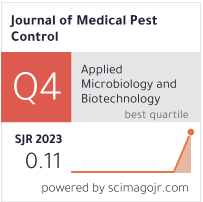Comparison of the effectiveness of ARIMA model and GM (1,1) in predicting the epidemic trend of other infectious diarrheal diseases
Abstract
Objective:
To compare the predictive performance of the Autoregressive Integrated Moving Average (ARIMA) model and the Grey Model GM(1,1) in forecasting the epidemic trend of other infectious diarrheal diseases, and to provide a basis for selecting appropriate models for disease surveillance and early warning.
Methods:
Reported incidence data of other infectious diarrheal diseases over several years were collected and divided into training and test sets. Both ARIMA and GM(1,1) models were constructed based on the training data and used to predict incidence in the test period. The models’ goodness-of-fit and predictive accuracy were evaluated using metrics such as mean absolute percentage error (MAPE), root mean square error (RMSE), and Akaike information criterion (AIC).
Results:
Both models captured the overall epidemic trend, but the ARIMA model showed better fitting and higher predictive accuracy than the GM(1,1) model, particularly in reflecting seasonal fluctuations and short-term variations. The GM(1,1) model was simpler and required less data but had lower precision compared to ARIMA.
Conclusion:
The ARIMA model is more suitable than GM(1,1) for accurately predicting the epidemic trend of other infectious diarrheal diseases, especially when sufficient data are available. However, GM(1,1) can still serve as a useful tool in situations with limited data and for rough trend estimation.
Full text:
PDFReferences
Zhou R., Ma X., Dong H., Zeng J., Yao L., Zhao Z.



